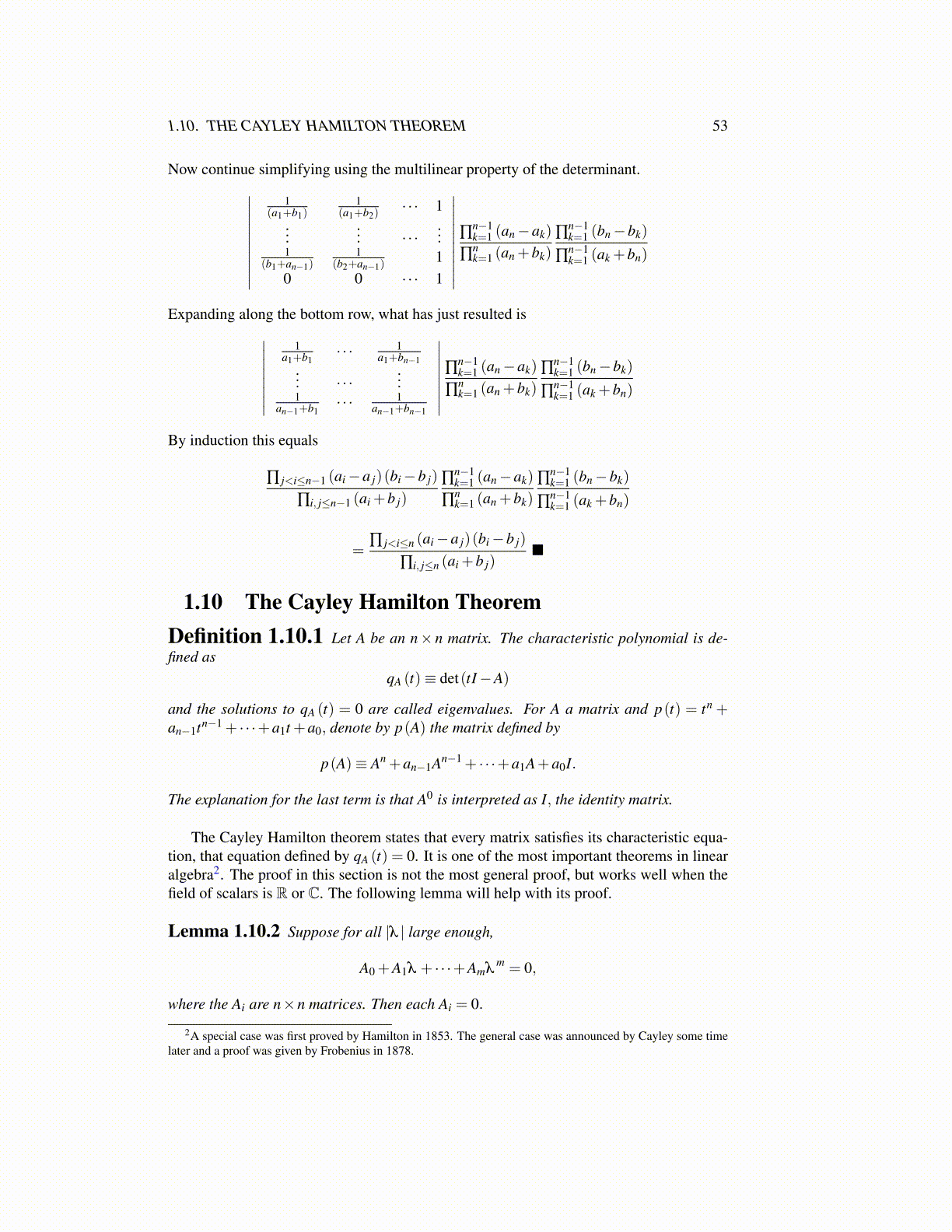
1.10. THE CAYLEY HAMILTON THEOREM 53
Now continue simplifying using the multilinear property of the determinant.∣∣∣∣∣∣∣∣∣∣
1(a1+b1)
1(a1+b2)
· · · 1...
... · · ·...
1(b1+an−1)
1(b2+an−1)
10 0 · · · 1
∣∣∣∣∣∣∣∣∣∣∏
n−1k=1 (an−ak)
∏nk=1 (an +bk)
∏n−1k=1 (bn−bk)
∏n−1k=1 (ak +bn)
Expanding along the bottom row, what has just resulted is∣∣∣∣∣∣∣∣1
a1+b1· · · 1
a1+bn−1... · · ·
...1
an−1+b1· · · 1
an−1+bn−1
∣∣∣∣∣∣∣∣∏
n−1k=1 (an−ak)
∏nk=1 (an +bk)
∏n−1k=1 (bn−bk)
∏n−1k=1 (ak +bn)
By induction this equals
∏ j<i≤n−1 (ai−a j)(bi−b j)
∏i, j≤n−1 (ai +b j)
∏n−1k=1 (an−ak)
∏nk=1 (an +bk)
∏n−1k=1 (bn−bk)
∏n−1k=1 (ak +bn)
=∏ j<i≤n (ai−a j)(bi−b j)
∏i, j≤n (ai +b j)■
1.10 The Cayley Hamilton TheoremDefinition 1.10.1 Let A be an n× n matrix. The characteristic polynomial is de-fined as
qA (t)≡ det(tI−A)
and the solutions to qA (t) = 0 are called eigenvalues. For A a matrix and p(t) = tn +an−1tn−1 + · · ·+a1t +a0, denote by p(A) the matrix defined by
p(A)≡ An +an−1An−1 + · · ·+a1A+a0I.
The explanation for the last term is that A0 is interpreted as I, the identity matrix.
The Cayley Hamilton theorem states that every matrix satisfies its characteristic equa-tion, that equation defined by qA (t) = 0. It is one of the most important theorems in linearalgebra2. The proof in this section is not the most general proof, but works well when thefield of scalars is R or C. The following lemma will help with its proof.
Lemma 1.10.2 Suppose for all |λ | large enough,
A0 +A1λ + · · ·+Amλm = 0,
where the Ai are n×n matrices. Then each Ai = 0.
2A special case was first proved by Hamilton in 1853. The general case was announced by Cayley some timelater and a proof was given by Frobenius in 1878.